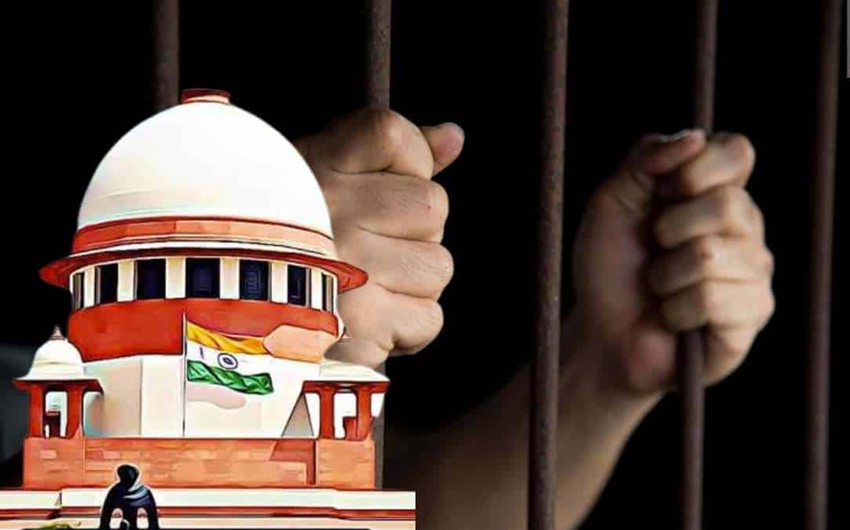- Courses
- GS Full Course 1 Year
- GS Full Course 2 Year
- GS Full Course 3 Year
- GS Full Course Till Selection
- Answer Alpha: Mains 2025 Mentorship
- MEP (Mains Enrichment Programme) Data, Facts
- Essay Target – 150+ Marks
- Online Program
- GS Recorded Course
- Polity
- Geography
- Economy
- Ancient, Medieval and Art & Culture AMAC
- Modern India, Post Independence & World History
- Environment
- Governance
- Science & Technology
- International Relations and Internal Security
- Disaster Management
- Ethics
- NCERT Current Affairs
- Indian Society and Social Issue
- NCERT- Science and Technology
- NCERT - Geography
- NCERT - Ancient History
- NCERT- World History
- NCERT Modern History
- CSAT
- 5 LAYERED ARJUNA Mentorship
- Public Administration Optional
- ABOUT US
- OUR TOPPERS
- TEST SERIES
- FREE STUDY MATERIAL
- VIDEOS
- CONTACT US
Open Prisons in India
Open Prisons in India

The Supreme Court of India has recently ordered several states and Union Territories (UTs) to provide detailed reports on the operation of open prisons.
- This move aims to address the severe overcrowding in traditional prisons and ensure the effective implementation of this correctional model.
Why the Supreme Court is Focusing on Open Prisons:
- Prison Overcrowding: Open prisons are seen as a potential remedy for the persistent issue of overcrowding in conventional prisons. By relocating some prisoners to open-air facilities, the pressure on high-security prisons is reduced.
- Psychological Impact: The open prison model is intended to reduce the psychological stress faced by convicts and ease their reintegration into society.
- SC’s Oversight Role: The Supreme Court seeks to ensure that states and UTs are properly managing open prisons as part of their correctional strategies, reflecting its broader role in overseeing the protection of prisoners' rights and enhancing prison management.
What are Open Prisons?
- Definition: Semi-open or open prisons are correctional facilities without traditional high walls, barbed wire, and armed guards. They rely on inmate self-discipline and community engagement.
- Purpose: They focus on rehabilitation and reintegration rather than punishment. This approach aims to transform inmates into law-abiding citizens through community integration and self-discipline.
- Historical Context: The concept began in India in 1905 with a prison in the Bombay Presidency. The modern form of open prisons was established post-independence with the first open prison annexe set up in Lucknow in 1949.
Features of Open Prisons:
- Operational Model: Inmates are allowed to leave the prison during certain hours and are expected to work to support themselves and their families.
- Rules: Rajasthan's 1972 Open Air Camp Rules define open prisons as facilities "without walls, bars, and locks," with inmates required to return before a second roll call.
Types of Open Prisons:
- Semi-Open Training Institutions: Attached to closed prisons with moderate security.
- Open Training Institutions/Work Camps: Focus on public works and vocational training.
- Open Colonies: Allow family members to live with inmates, facilitating employment and self-sufficiency.
Eligibility Criteria:
- General Rule: Convicts with good conduct and those who have spent at least five years in controlled prisons may be eligible for open prisons.
- State-Specific Rules: States like West Bengal use committees of jail and police officials to select prisoners based on their conduct.
Legal Framework:
- Constitutional Context: Prisons are a State subject under Entry No. 4 of List II (State List) of the 7th Schedule of the Constitution of India.
- Governing Laws: Prisons in India are governed by the Prisons Act, 1894, and the Prisoners Act, 1900. Each state has its own rules and manuals.
International Perspective:
- Historical Examples: Open prisons have existed globally, including Switzerland’s Witzwill (1891) and the UK’s New Hall Camp (1936).
- UN Guidelines: The Nelson Mandela Rules (2015) advocate for open prison systems to aid rehabilitation, emphasizing prisoner rights to employment and outside contact.
Recommendations:
- Supreme Court: In the Rama Murthy v. State of Karnataka case (1996), the SC supported the expansion of open jails.
- Committees: Various committees, including the All India Prison Reforms Committee (1980) and the NHRC, have advocated for the establishment and expansion of open prisons.
Pros and Cons of Open Prisons:
|
Category |
Pros |
Cons |
|
Cost Efficiency |
Reduces operational costs significantly. |
Lacks modernization; insufficient funding. |
|
Overcrowding |
Alleviates overcrowding in closed jails. |
Underutilization due to poor awareness. |
|
Psychological Impact |
Improves mental health and reintegration. |
Risk of dependency and resistance to vacate. |
|
Staffing |
Requires fewer staff compared to closed jails. |
Staffing challenges due to shortages. |
|
Rehabilitation |
Enhances reformative punishment and integration. |
Outdated laws and lack of uniform guidelines. |
|
Recidivism |
Reduces chances of recidivism. |
Debate over its effectiveness in preventing recidivism. |
|
Employment |
Encourages employment for inmates. |
Remote locations can hinder local employment. |
|
Socialisation |
Increases interaction with the outside world. |
Limited availability for female prisoners. |
|
Reformative Potential |
Focuses on moral development and cooperative living. |
Selection process can be opaque, leading to bias. |
|
Community Impact |
Benefits both prisoners and crime survivors. |
Security and discipline issues; perceived leniency. |
Other Types of Prisons in India:
- Central Jail: Houses long-term prisoners, including those convicted of severe crimes.
- District Jail: Main jail for states/UTs without central jails.
- Sub Jail: Smaller facilities serving at the sub-divisional level.
- Special Jail: Maximum-security prisons for high-risk prisoners.
- Women's Jails: Exclusively for female prisoners; only 34 out of 1,330 prisons.
- Borstal School: Youth detention centers for juvenile offenders.
- Other Jails: Found in Karnataka, Kerala, and Maharashtra, categorized under other jails.
Conclusion
Open prisons in India represent a progressive approach to prison management, emphasizing rehabilitation over mere punishment. By addressing issues of overcrowding and providing a less restrictive environment, open prisons aim to facilitate better reintegration of convicts into society. However, challenges such as underutilization, outdated laws, and the lack of uniformity in implementation persist. The Supreme Court's recent focus on open prisons underscores the need for comprehensive reform and effective management to maximize the benefits of this correctional model. As India continues to evolve its approach to criminal justice, the success of open prisons will depend on addressing these challenges and aligning state practices with the broader goals of reform and rehabilitation.




